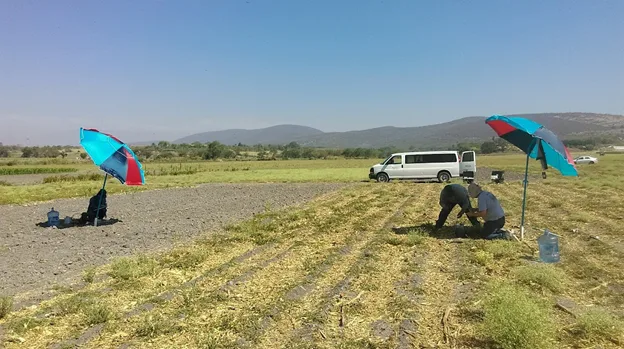How does physical disturbance of soil impact carbon mineralisation?
A study on the physical disturbance of soil shows that it drives changes in soil properties and affects soil microbial activity
Higher levels of potential carbon mineralisation (Cmin) in soil indicate that the soil is healthier. Many reports indicate that Cmin in agricultural soils increases with reductions in soil disturbance through tillage, but the mechanisms driving these increases are not well understood.
The International Maize and Wheat Improvement Center (CIMMYT) has established a network of research platforms in Mexico, where collaborating scientists evaluate conservation agriculture and other sustainable technologies to generate data on how to improve local production systems. This network of research trials, many of which have over five years in operation, allowed us to participate with Mexican sites in the North American Project to Evaluate Soil Health Measurements (NAPESHM). This project aimed to identify widely applicable soil health indicators and evaluate the effects of sustainable practices on soil health in 124 long-term experiments across Canada, the United States of America, and Mexico.
Experienced field teams from CIMMYT sampled the soils from 16 experiments in Mexico, which were then analysed by the Soil Health Institute for this study. Potential carbon mineralization, 16S rRNA sequences, and soil characterisation data were collected, with results demonstrating that microbial (archaeal and bacterial) sensitivity to physical disturbance is influenced by cropping system, the intensity of the disturbance, and soil pH.
A subset of 28 percent of amplicon sequence variants were enriched in soils managed with minimal disturbance. These enriched sequences, which were important in modeling Cmin, were connected to organisms that produce extracellular polymeric substances and contain metabolic strategies suited for tolerating environmental stressors.
The unique sampling design of this study – analysing across a variety of agricultural soils and climate – allows to evaluate management impacts on standardised measures of soil microbial activity. Additionally, understanding the microbial drivers of soil health indicators like Cmin can help with the interpretation of those indicators and ultimately the understanding of how to better manage soils.
A study on the physical disturbance of

